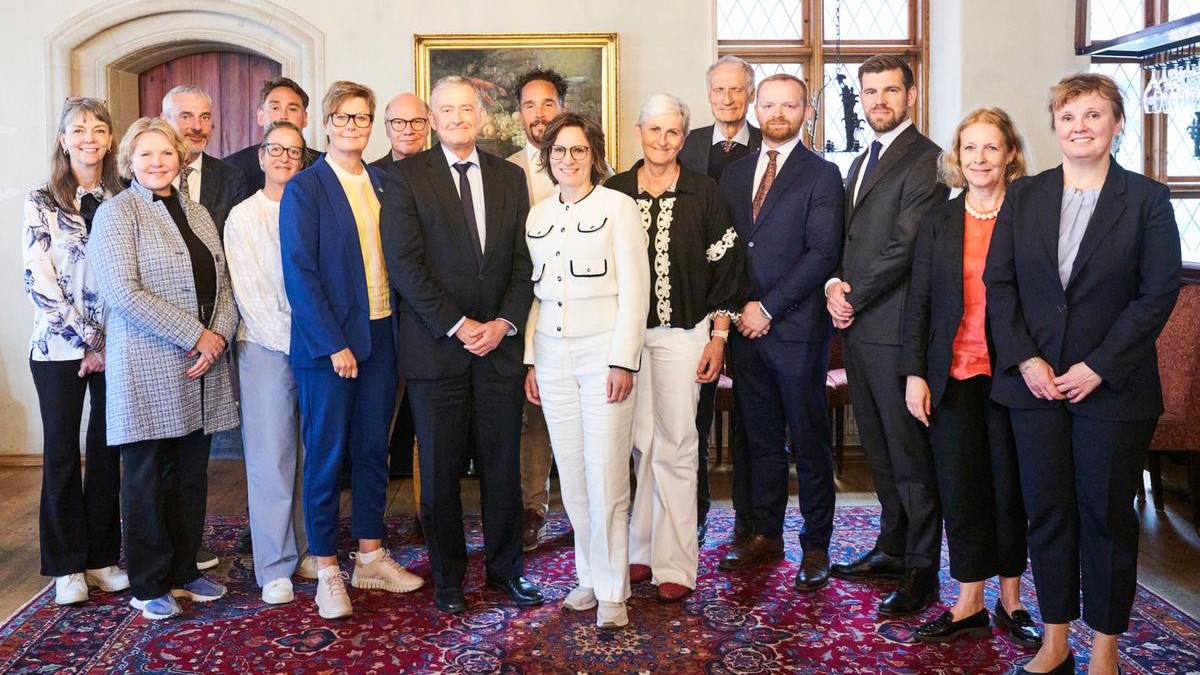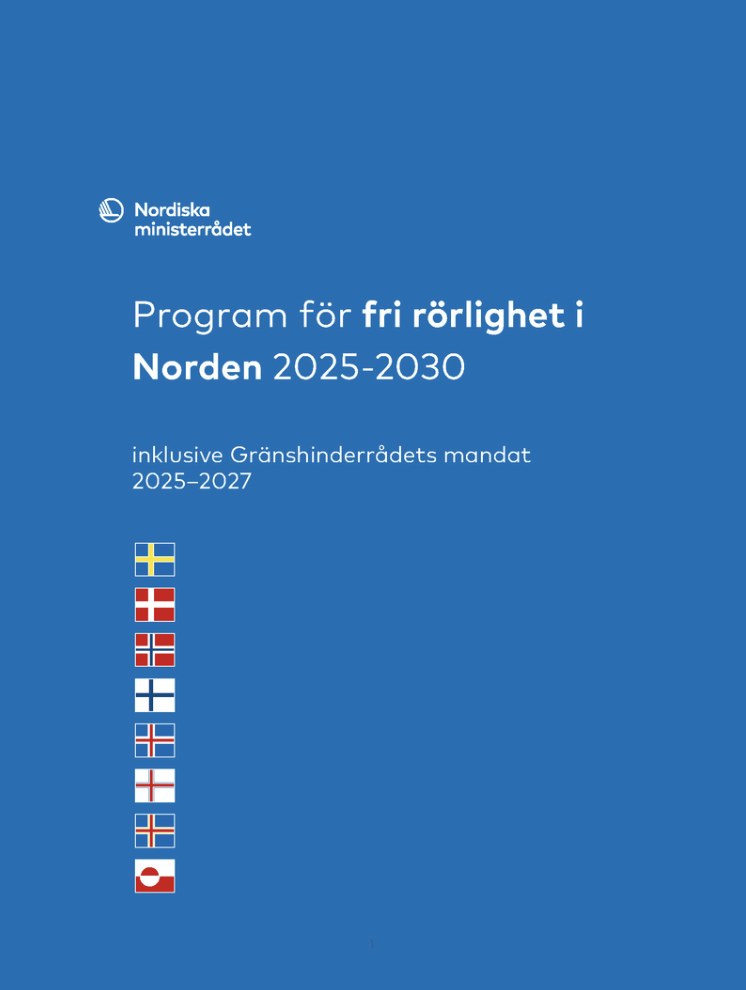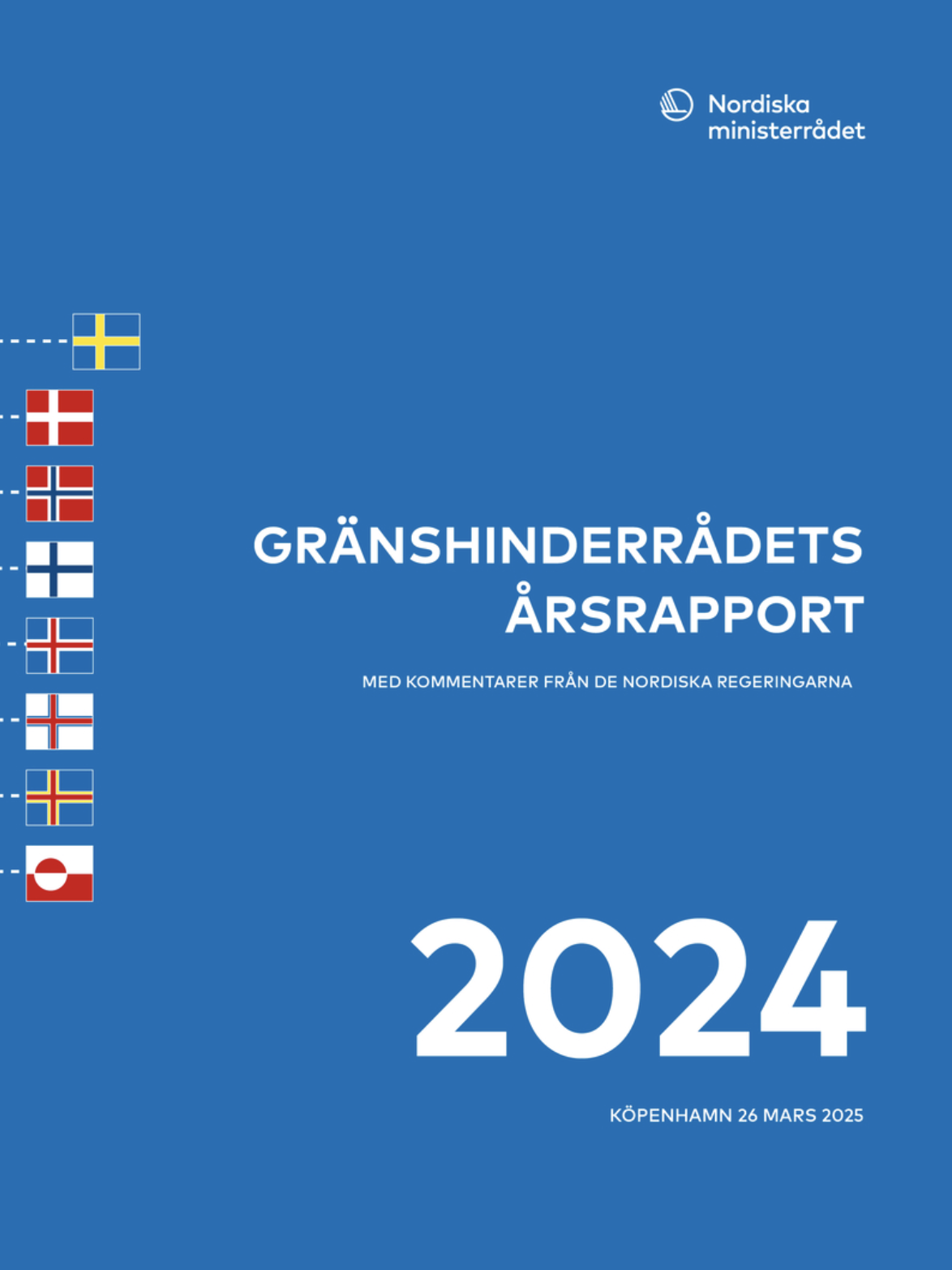More active border obstacle role for Nordic cooperation ministers
A new six-year programme aims to strengthen the work for freedom of movement in the Nordic region. The goal is to remove more border obstacles, strengthen mobility and secure clearer political ownership when working to improve free movement.
The work to remove border obstacles in the Nordic region was stepped up in 2024. A new six-year programme for freedom of movement was one of the measures that were adopted. Meanwhile, the information service Info Norden experienced a record number of visitors to their website.
Political ownership
From 2025, the work on improving freedom of movement has been given a major lift politically as well as administratively.
The new programme for 2025 to 2030 aims to lift the issue even higher on the political agenda and will give the cooperation ministers a clearer role.
“With a new programme for freedom of movement in place, the Ministers for Nordic Cooperation will have clearer political ownership over efforts to remove obstacles to freedom of movement. The programme lays a solid foundation for continued efforts to strengthen integration, particularly in the digital sphere.
"Freedom of movement is a fundamental prerequisite for achieving the vision of being the most sustainable and integrated region in the world by 2030,” said Jessica Rosencrantz, Sweden’s Minister for European Union Affairs and responsible for Nordic affairs, as the programme was presented in October 2024.
A necessary political push
A new secretariat for the freedom of movement in the Nordic region programme has been established and extra resources made available. The secretariat is led by Sandra Forsén.

Sandra Forsén is a senior advisor at the Nordic Council of Ministers. Photo: Ricky John Molloy/norden.org
“The work for freedom of movement, mobility and removing border obstacles has been a priority for many years. It is crucial for progress that the cooperation ministers are given a clearer role,” believes Sandra Forsén.
She says the cooperation ministers will help ensure that issues concerning freedom of movement are highlighted when needed, and make sure that both time and resources are allocated to the work.
Long-standing commitment
The head of the secretariat has been a cross-border commuter herself for five years. She lives in Malmö and works at the Nordic Council of Ministers’ offices in Copenhagen.
Forsén has been working with freedom of movement issues in the Nordics for many years. She has also worked for the Danish-Swedish information service Øresunddirekt and the Norwegian-Swedish border service in Morokulien.
“As a cross-border commuter, I am particularly committed to this task and know from experience where the challenges lie.”
Forsén is happy to see more resources being spent on creating better solutions for freedom of movement in the Nordic region.
The Freedom of Movement Council still plays a key role
The Freedom of Movement Council will still play a key role in removing border obstacles. The Council was established in 2014.
The Council’s eight representatives will work together with national actors who can contribute to removing border obstacles for individuals and businesses in the Nordics.
The cooperation includes the information services, the government ministers, national administrations and authorities and parliamentarians.
Status 2024
The Council’s 2024 annual report says it is actively working on 35 border obstacles. 11 of these have been processed – three have been solved, while eight are considered unsolvable.
The latter could be because of national legislation, a lack of political will or because laws and regulations in the EU/EEA currently make them unsolvable.

The graph shows how many border obstacles have been solved or discarded each year over a 10 year period. Illustration: The Freedom of Movement Council's annual report.
“Not being able to solve an obstacle is also a result. Efforts to remove a border obstacle can take years. But even with a lot of resources, dialogue, and effort, there are obstacles that simply can’t be removed in the way we might have originally hoped. Not every obstacle can be solved,” says Forsén.
Six priorities
Between 2025 and 2027, five themes will be given top priority:
- Digitalisation and access to cross-border services
- Mobility in times of crisis – a new topic following experiences from the Covid-19 pandemic
- Pensions from a cross-border perspective
- Tax-related cross-border obstacles
- Civil registry cooperation – closely linked to digitalisation and information sharing
- Border-regional statistics
“We see that nearly all border obstacles are in some way linked to the common Nordic labour market, be it taxation, pensions or social security payments. These are often challenging and complex issues, and it takes time to find solutions to them,” says Forsén.

The Cooperation Ministers and representatives from the Freedom of Movement Council together in June 2024. Photo: Ken Hermann/norden.org
Some concrete examples of border obstacles that affect the labour market are being worked on:
- The right to take leave for political assignments when working in another Nordic country.
- Taxation for cultural workers.
- Requirement for personal identification numbers and ID documents for cross-border commuters.
- Problems for third-country nationals commuting across the border in Greater Copenhagen.
- Difficulties with bank accounts for cross-border commuters and companies in the Nordic countries.
- Taxation for cross-border commuters in cases of involuntary home working in the country of residence.
- Long processing times at Nav.
Expanding the border obstacle database
Border obstacles are registered in the border obstacle database. The idea is to make it possible to see how the work to solve these barriers is progressing. The database is open to everyone.
“Today, it is just a static list of border obstacles. In the future, we want to develop it into a more useful tool for stakeholders which can help make the work more efficient,” says Forsén.
The plan is also to provide more information about the work to solve border obstacles on Info Norden and the cross-regional information services' websites.
“What we're starting this year is a large project. I’m not sure when it will be completed, so the border obstacle database will remain in its current form for a while yet,” says Forsén.
Information across many channels
The Nordic information services also play an important role in the new programme. These are the cross-border regional information centres and Info Norden.
In 2024, these services had more than 3.9 million online visitors, 41,500 in-person requests, and they participated in nearly 500 seminars and information meetings.
- Challenging border crossings
-
The old Svinesund Bridge remains, as do some border obstacles. Photo: Karin Beate Nøsterud/norden.org CC
- What is a border obstacle?
-
The Nordic border obstacle cooperation defines border obstacles as “a rule, administrative practice, or lack of coordination between Nordic countries that makes it more difficult for individuals or businesses to move, work, study, or conduct business across Nordic borders."
It is also considered a border obstacle if a person, by exercising their right to mobility, ends up with worse conditions than other people in a comparable situation – either in their country of residence or in their country of work.
- Programmes and reports
-
Border database of cross-border obstacles in the Nordic region
Programme for freedom of movement in the Nordic Region 2025-2030 (in Swedish)
2024 annual report from the Freedom of Movement Council (in Swedish)


 Follow us on Facebook
Follow us on Facebook
